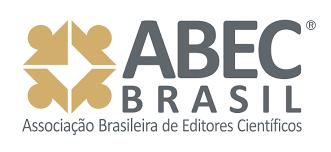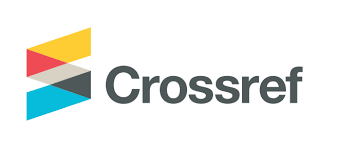ESTUDO DA APLICAÇÃO DO OCTABORATO DE SÓDIO COMO FONTE DE BORO NO TRATAMENTO TERMOQUÍMICO DE BORETAÇÃO POR ELETROEROSÃO NO AÇO ABNT 8620
DOI:
https://doi.org/10.22407/1984-5693.2021.v14.p.e20221407Resumo
A boretação é um tratamento termoquímico aplicado em aços para melhorar suas propriedades superficiais, promovendo melhor desempenho em diversas aplicações tribológicas na engenharia mecânica. Este trabalho de pesquisa investigou a viabilidade da utilização do octaborato de sódio (Na2B8O13.4H2O) como fonte do elemento boro no processo de eletroerosão por penetração, em superfície do aço ABNT 8620, utilizando uma máquina adaptada. O eletrodo ferramenta utilizado foi o cobre eletrolítico. O octaborato de sódio foi diluído em água deionizada para formar a solução aquosa, aplicada como fluido dielétrico. A camada boretada foi avaliada por meio de microscopia ótica e ensaio de microdureza Vickers. A difusão do boro foi avaliada por difração de raio-x na superfície usinada e por espectroscopia de raios x por dispersão em energia (EDS) em equipamento de Microscopia Eletrônica de Varredura (MEV). Após aplicação do processo de boretação por eletroerosão foi obtido o ganho de 134 %, aproximadamente, no valor de dureza na camada boretada em relação ao material base. As fases FeB e Fe2B foram detectadas nos difratogramas de raio-x, bem como, a difusão do elemento boro observada por meio de EDS na seção transversal da peça próximo da subsuperfície.
Referências
AN J; LI C; WEN Z; YANG YL; SUN SJ. A study of boronizing of steel AISI 8620 for sucker rods. Metal Science and Heat Treatment 53 (11–12), 2012.
CAMARGO BC; COSTA HL; RASLAN AA. Endurecimento superficial de uma liga Ti6Al4V por meio de usinagem por descargas elétricas. Anais... 5º COBEF - Congresso Brasileiro de Engenharia de Fabricação, Belo Horizonte, 2008.
ELIAS L; ELIAS C; BATISTA BER; SILVA ER. Nitretação por descargas elétricas do ferro fundido nodular. Revista Perspectivas da Ciência e Tecnologia 11, 141-154, 2019.
GHANEM F; BRAHAM C; FITZPATRICK ME; SIDHOM H. Effect of near-surface residual stress and microstructure modification from machining on the fatigue endurance of a tool steel. J Mater Eng Perform 11, 631–639, 2002.
SANTOS RF; SILVA ER; SALES WF; RASLAN AA. Analysis of the Surface Integrity when Nitriding AISI 4140 Steel by the Sink Electrical Discharge Machining (EDM) process. Procedia CIRP 45, 303-306, 2016.
SEN S; SEN U; BINDAL C. An approach to kinetic study of borided steels. Surface and Coatings Technology 191(2–3), 274– 285, 2005.
ŞEŞEN FE; ÖZGEN ÖS; ŞEŞEN MK. A Study on Boronizing Kinetics of an Interstitial-Free Steel. Materials Performance and Characterization. ASTM International 6 (4), 492-509, 2017.
SILVA JZ; KEDDAM M; DOMÍNGUEZ MO; ESPINOSA MCE; SODI FC; PEÑA JO; DIOS LDF; VARGAS OAG. Kinetics of Formation of Fe2 B Layers on AISI S1 Steel. Materials Research 21(5), 01-10, 2018.
SILVA IC; JIMÉNEZ MF; BÁRCENAS DB; RAMÍREZ HB; ADAME JA; TRINIDAD JM; CAMPAÑA JAM. Evolution of boride layers during a diffusion annealing process. Surface and Coatings Technology 309, 155-163, 2017.
SILVA SP; ABRÃO AM; SILVA ER; CAMARA MA. Surface modification of AISI H13 steel by die-sinking electrical discharge machining and TiAlN coating: A promising hybrid technique to improve wear resistance.Wear462–463, 01-12, 2020a.
SILVA SP; ABRÃO AM; WEIDLER PG; SILVA ER; CÂMARA MA. Investigation of nitride layers deposited on annealed AISI H13 steel by die-sinking electrical discharge machining. The International Journal of Advanced Manufacturing Technology 109, 2325–2336, 2020b.
SINGH H; BANWAIT SS. Experimental Investigations of Surface Modification of AISI 1045 Die Steel by Electro Discharge Machining Process. American Journal of Mechanical Engineering 4 (4), 131-141, 2016.
SKRÓCIE W. Boriding/Boronizing of Steel Materials [Internet]. 2021. Available from:https://www.totalmateria.com/page.aspx?ID=CheckArticle&site=kts&LN=PL&NM=496
TABUR M; IZCILER M; GUL F; KARACAN I. Abrasive wear behavior of boronized AISI 8620 steel. Wear 266, 1106–1112, 2009.
TÜRKMEN İ; YALAMAÇ E; KEDDAM M. Investigation of tribological behaviour and diffusion model of Fe2B layer formed by pack-boriding on SAE 1020 steel. Surface &Coatings Technology 377, 01-12, 2019.
TÜRKMEN I; YALAMAÇ E. Effect of Alternative Boronizing Mixtures on Boride Layer and Tribological Behaviour of Boronized SAE 1020 Steel. Metals and Materials International, 2021.
ULUTAN M; CELIK ON; GASAN H; ER U. Effect of different surface treatment methods on thefriction and wear behavior of AISI 4140 steel. J. Mater. Sci. Technol. 26(3), 251–257, 2010.
YAO Q; SUN J; FU Y; TONG W; ZHANG H. An evaluation of a borided layer formed on Ti6Al-4V alloy bymeans of SMAT and low-temperature boriding. Materials (Basel) 9 (12),2016.
YAN BH; TSAI HC; HUANG FY. The effect in EDM of a dielectric of a urea solution in water on modifying the surface of titanium. International Journal of Machine Tools &Manufacture 45, 194–200, 2005.
Downloads
Publicado
Edição
Seção
Licença
Copyright (c) 2022 Revista Eletrônica Perspectivas da Ciência e Tecnologia - ISSN: 1984-5693

Este trabalho está licenciado sob uma licença Creative Commons Attribution-NonCommercial 4.0 International License.
Autores que submetem trabalhos a esta conferência aceitam que esta revista, bem como todo e qualquer trabalho publicado nela, estão sob licença Creative Commons 4.0 do tipo: CC BY - NC











